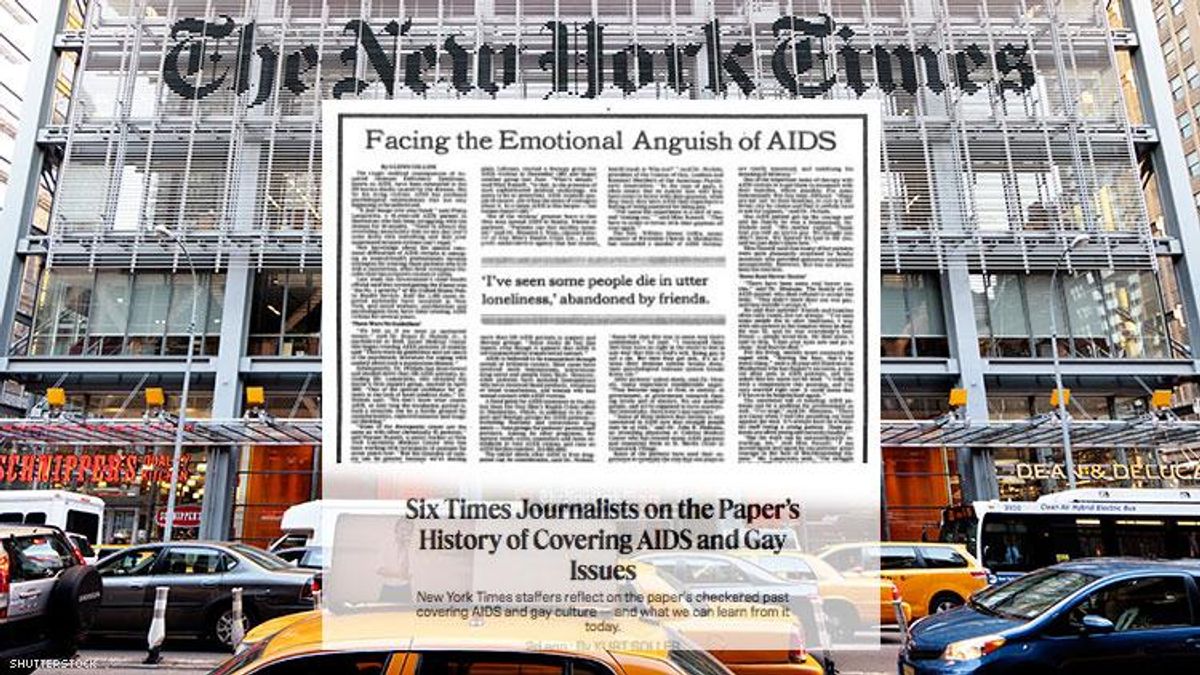In a special magazine feature, the nation's paper of record admits right at the top: "The New York Times had a spotty record of covering the AIDS epidemic in the early 1980s -- and gay culture in general."
As part of a larger package about HIV and AIDS in the '80s, six out Times journalists examined the newspaper's sordid history of coverage. Economy reporter Natalie Kitroeff wrote about the first pride event advertised internally by Times employees in 1992, after five years of parties had already passed. Posted to a newsroom bulletin board, it advertised:
"We're having a party.
We'd love to invite you.
But we don't know who you are."
Denny Lee, a senior staff editor for Styles, wrote about how a lack of representation in the newsroom drove inadequate coverage. "In 1983, there were few, if any, openly gay reporters on staff, and hardly anyone to challenge stereotypes about gay people," wrote Lee in his examination centered on the Styles section. "It would take until the next decade before the floodgates would open at The Times, and openly gay men and women would assume positions of leadership in the newsroom."
And although the newspaper dubbed today's feature the work of "six members of the L.G.B.T.Q. community who work for The Times (across various ages and beats)," it didn't include any writer who is transgender, and none is known to work for The Times.
Whatever their causes, the mistakes of the '80s covering the AIDS crisis are infamous. Washington correspondent Jeremy W. Peters wrote about The Times' often vague phrasing fostering confusion about how the disease was spread. Media reporter John Koblin examined what took so long for The Times to run any story about AIDS on the front page, not until 1983, suggesting the slowness was at least partly driven by the staff's own reluctance to talk about gay men. Famed Los Angeles bureau chief Adam Nagourney wrote about sex clubs, and whether Times coverage combatted a health crisis or fed sensationalism -- or both.
Reporter Wesley Morris, a critic at large, scrutinized The Times' habit of writing obituaries that skirted the real cause of death -- AIDS. "Newspapers can be funny places. So can people," he wrote. "The omission of AIDS wasn't necessarily an editorial judgment. It's often up to the families and friends and physicians of the deceased to state how they died." The men who died would sometimes dictate how they wanted to be remembered. "No one wanted to go to an AIDS funeral," wrote Morris. "Hence the euphemisms and the workarounds. There was only so much they could cover up, of course, since lots of people went to too many AIDS funerals."
Read the entire T magazine feature.


















































































